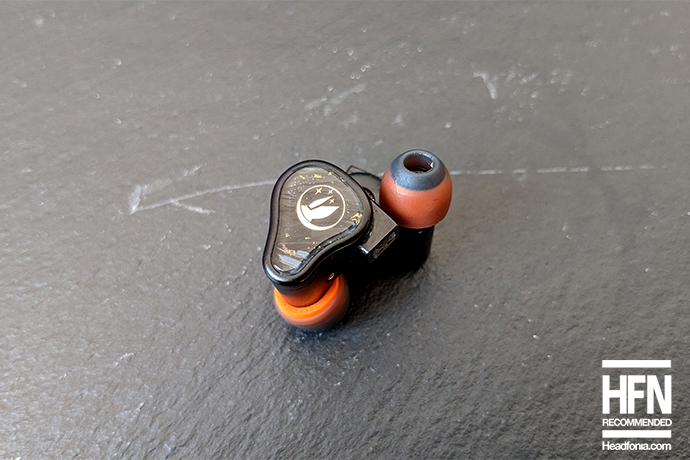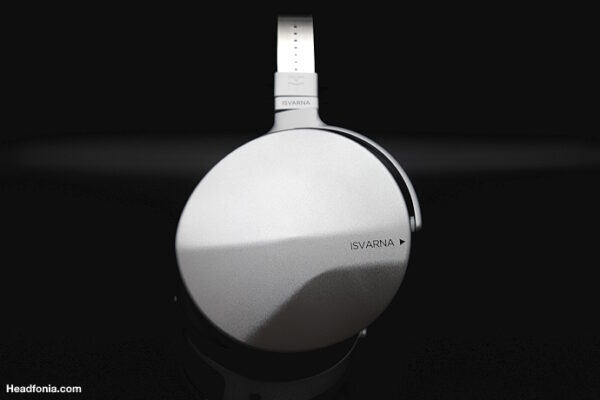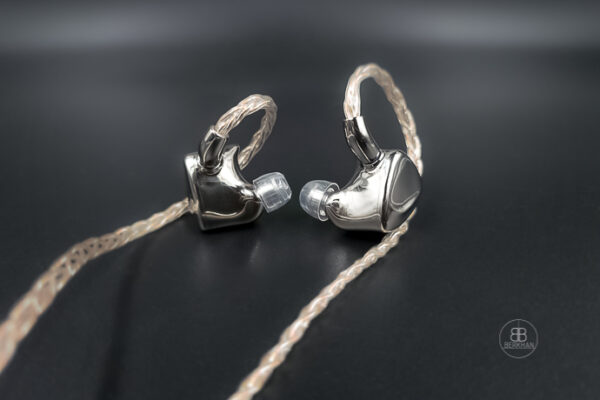Still, the Radon 6’s layering and imaging are of the highest quality. Musicians and instruments are placed in the sound stage with precision and can be pointed out easily. There is enough space around each instrument to distinguish every one of them.
The Radon’s treble features very high levels of speed and energy. Highs extend wide into the upper-treble region and deliver a vast amount of space and air into the overall sound. With bad recordings I found the Radon 6 to be quite critical, as it does not intend to cover up anything. This is particularly audible when there is a lot of bite in the highs of a record. Then the Radon can be piercing and even aggressive. But this is not always the case, as it truly depends on the recording in my opinion.
Wrapped up in one sentence I would describe the Radon 6 as FIR’s most balanced monitor, that delivers on all fronts. Top level bass, open sounding mids and energetic treble, all bundled with hard to match technicalities.
Now, there is one thing I want to point out, and that’s how well it scales with different sources. The Radon 6 of course does not need any special amplification per se. But once I started using my Hugo 2, I noticed how much the sound could improve in terms of detailing, resolution, and stage construction. The Radon 6 became more precise, more dynamic in the lows and more immersive as a whole. This tingled my curiosity to hook it up to my Hugo TT2 desktop DAC/Amp. All I can say is, that this experience has left me with goosebumps (something that hardly ever happens nowadays). The TT2 just unleashed the full potential of the Radon 6 and since then I can be found daily lying on the floor with my Radon 6’s in my ears and a huge grin on my face. I can only recommend you try it with a beefy desktop source, should you have one at home. It’s freakishly good.
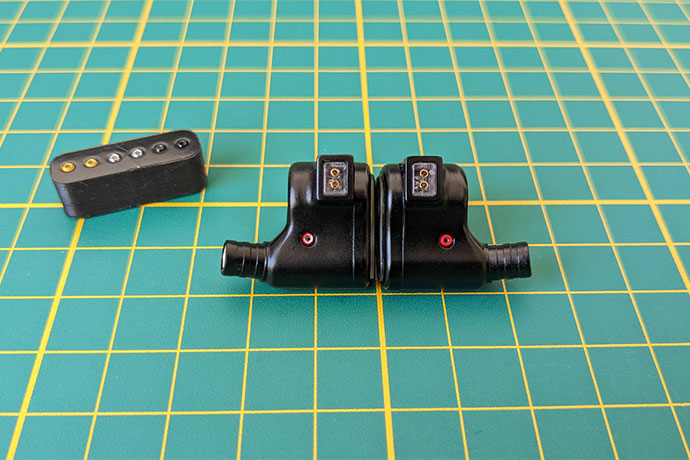
Let’s also quickly go over the different modules now, since the above description is of the red module only.
With the black module you get a more forward mid and upper bass tuning, resulting also in a thicker and slightly darker lower-midrange. I have personally found this to be an excellent choice for Rock and other guitar-heavy genres. The mids are fuller and denser overall, while the treble does get blended out a little more. I enjoyed this one a lot.
With the silver module, bass becomes even more forward to the point where my comfort zone is on the edge of tipping over. Mids become heavier and darker again, while the treble takes yet another step back. Tested and gone back into the module-tray.
The yellow module is pure bass and too much for me. The room became also became narrower and lost some of its magic. All in all, my last choice.
Between all modules, the red and black have been my personal favorites and I have been rotating these two regularly.
Comparisons
In this section we will focus on a couple of selected comparisons to give you a better understanding of how I hear the Radon 6. Maybe this will aheadfonia.com/fir-audio-xenon-6-review https://www.headfonia.com/fir-audio-xenon-6-review/lso help you decide whether the Radon 6 is something that suits your personal taste and needs.
Comparisons are done using the stock modules (red for Rn6, silver for Kr5 and Xe6) with Lotoo’s PAW Gold Touch as source.
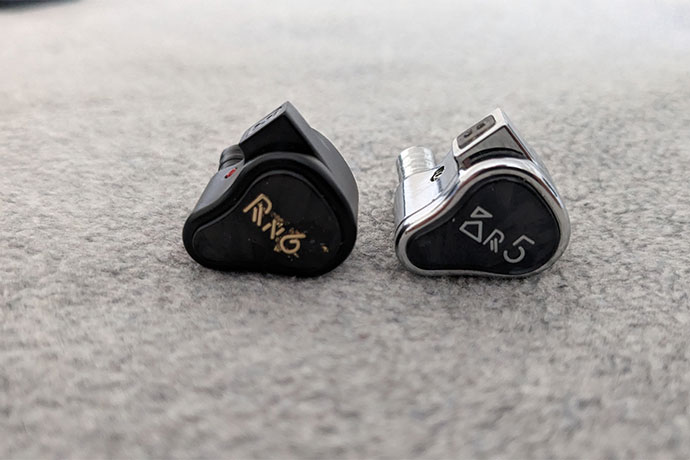
FIR Audio Krypton 5
The Krypton 5 is FIR’s second highest monitor in the stable – if you don’t count the Radon 6 due to its limited-edition status. They do share a couple of similarities. For example, both have a higher focus on the sub-bass section. The Radon does give more body and volume to the mid- and upper bass though, realizing a warmer and more natural sound overall.
The Kr5 bests the Rn6 in terms of resolution and details. That’s one section where the 5-er is one of the toughest contenders on the market. The Radon sounds fuller and richer throughout its entire sound signature, while the Kr5 goes for an almost studio-reference like tuning with forward sub-bass.
To me the Kr5 sounds more energetic, more agile and a bit more powerful than the Radon 6. The Radon on the other hand is more enjoyable, more emotional, and just more realistic sounding. The Krypton creates a wider and deeper sound stage with sharper imaging. It puts the musicians in a perfectly lit up room, but the background of the Radon’s is just that bit blacker, giving me a better contrast overall.
There definitely is a FIR Audio house-sound to be found in both IEMs. Their open and airy midrange, the impressive technical performance and the dynamics of the lows is something that both monitors share.
The Radon’s top end is softer in comparison to the Krypton. Which might appear a little darker, but also less in your face. People with lower treble tolerances will probably prefer the Radon here.
Both monitors have their distinctive qualities, and I pick either one of them for specific moods. However, I chose the Radon 6 whenever I really want to connect to my music. Which is something that’s rare nowadays in my opinion.
FIR Audio Xenon 6
The Xenon 6 is an IEM that people either love to bits or don’t connect with at all. I must admit, it does take some time getting used to the Xe6. Its full, thick, and darker sound needs a bit to settle. But once that’s done, it is hard to let go of the Xenon’s.
In comparison, the Xenon 6 sounds noticeably darker and thicker than the Radon 6. The Xenon has a more forward upper bass and lower midrange tuning, which results in bigger and fuller body. The Radon 6 sounds more neutral and open here, giving me an airier and lighter presentation, which however still is above neutral in terms of warmth.
This is also the key-difference between the Radon 6 and the Xenon 6 in my opinion. The richness and the body of the Xenon 6 are far above the Radon 6. The Xenon is just that much heavier than the Radon. Which is also a reason why the Radon has better speed from top to bottom.
The Radon 6 goes wider and deeper in terms of sound stage design. The Xenon 6’s stage is more like a club-venue, while the Radon 6 is creating a concert-hall like presentation. Although both IEMs have excellent resolution, it’s the Radon’s that takes the top spot here. The Xenon’s resolution is still something of an enigma to me though. It’s very difficult to achieve a sound that’s full and rich and still have this level of details.
At the top end of the spectrum, the Xenon 6 is the IEM with the least forward tuning of all three FIR monitors. In comparison to the Radon 6 it sounds more muted, while the Rn6 is more forward and agile. The Xenon’s however sound richer up top, where the Rn6 is brighter. The Radon provides more air through its highs, giving the sound overall a more open feeling.
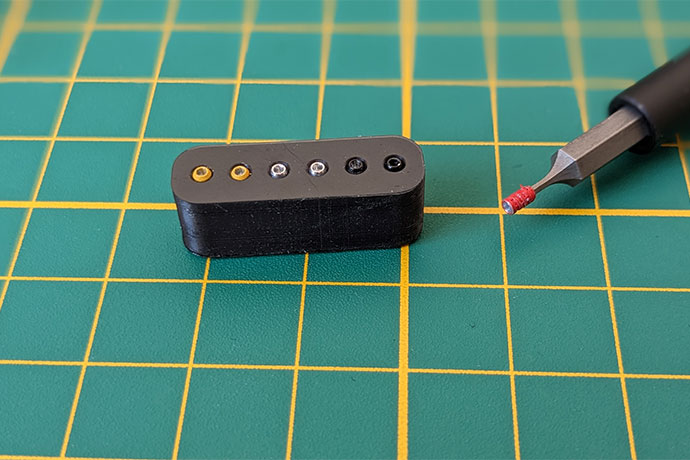
64 Audio Tia Fourté Noir
The Fourté Noir is also a limited-edition model and has been sold out for a few years already. Just like the Radon 6 (and all other FIR models) it’s a tube-less design, that only uses directly radiating drivers.
The Radon 6 sounds more neutral than the Fourté Noir in comparison. The Noir has higher focus on the mid-bass and sounds warmer, more organic, and thicker as a total. The Radon is more energetic and faster, with higher levels of air and resolution – especially in the midrange.
Both IEMs have an open sound, that features a large sound stage, but the Radon 6 does stretch a tiny bit wider, while the Fourté Noir is pulling off more depth.
With the kinetic bass, you get an experience that the Fourté Noir will never be able to achieve. The added sensation of feeling the lows coming from outside of your ear is something truly special and makes the bass experience just so good.
I guess the easiest way to describe the Fourté Noir’s sound signature sits between the Radon 6 and Xenon 6. The Noir is warmer and fuller overall but does not deliver the same levels of technicalities as the Radon. I find the Radon more enjoyable in the long run, also because the Fourté Noir’s treble is more biting and brighter than the Radon’s.
Vision Ears Phönix
The Phönix is one of the last all-BA flagships out there. And as that, there are some physical boundaries it can’t overcome. This is most noticeable in the bass. A dynamic driver produces a more visceral and natural sound that can go deeper. And this is certainly the case here. The Radon 6 sounds more impactful, faster, and overall more organic in the lows than the Phönix. The Radon has more weight, more authority and deeper extension.
In the mids, both monitors have a similarly emotional character. Both IEMs have the ability to truly let me enjoy my favorite albums on end. The main difference between the two here is, that the Phönix sounds a tad richer and wetter than the Radon 6, which opts for a more revealing sound. However, that’s not to say, that the Phönix sounds unrevealing. Quite the opposite actually. The Phönix is one of the top dogs when it comes to resolution.
The Radon sounds a bit lighter, more nimble feet than the Phönix, in direct comparison. But that also gives the FIR more agility in my opinion. In terms of sound stage dimensions, it is the Radon 6 that comes out as winner. It creates a wider and deeper stage than the Phönix.
Phönix has a very inoffensive treble tuning, which takes lesser risks. The Radon goes wider into the upper-treble and does so with a more forward approach. When coming from the Phönix, some might find this tiring though.
Conclusion
FIR Audio has created one of the best sounding IEMs I have laid my ears upon. With its W-shaped signature, flexibility with the supplied Atom modules and immersive sound it is giving me a hard time to ever put it out of my ears.
It’s hard not to recommend an IEM that hits my personal tuning-preference so perfectly. The entire package you get gives you not just one monitor, but four different flavors of it. Which is just the ability to finetune it to your liking that some need. My favorite modules are the Red – for when I want a more dynamic bass and an airier midrange – and the Black, for when I want that extra mid-bass bump and added weight to the lower mids.
The Radon 6 is taking the lead as IEM of the year for me and therefore it receives my full recommendation.
Pros:
– Excellent execution of a W-shaped signature
– Fun and energetic while still smooth
– Versatile tuning with ATOM modules
– Supplied silver cable
– Build quality overall
Cons:
– Paint chipping of ATOM modules – ask for new anodized modules
-Price
– “universal only” – just ask them for a CIEM 😉







